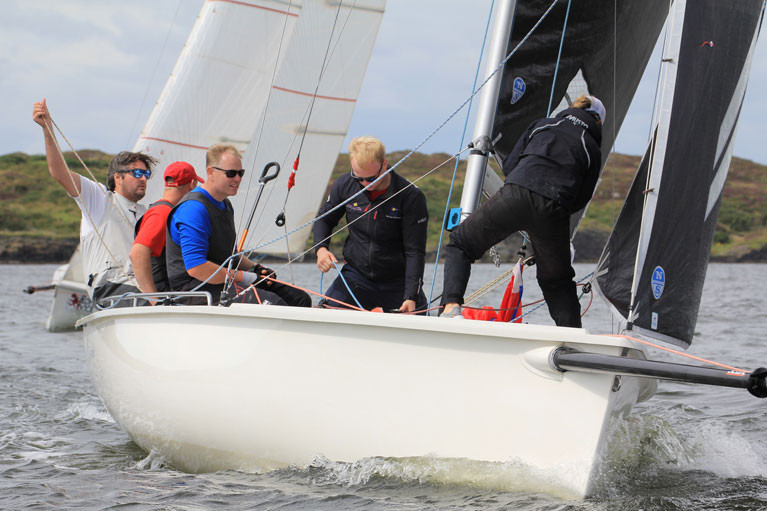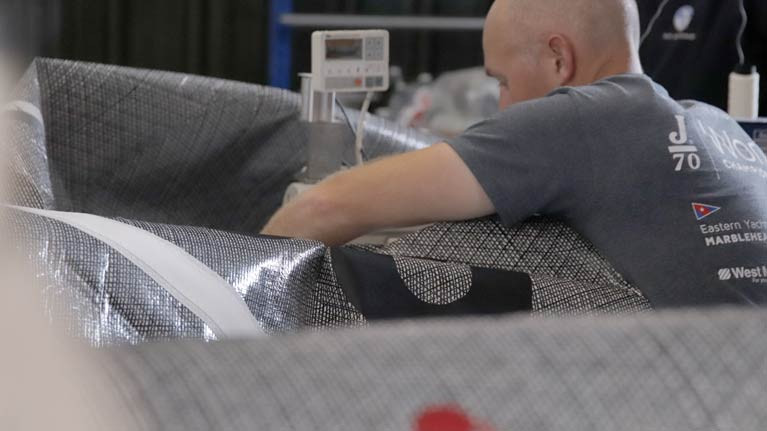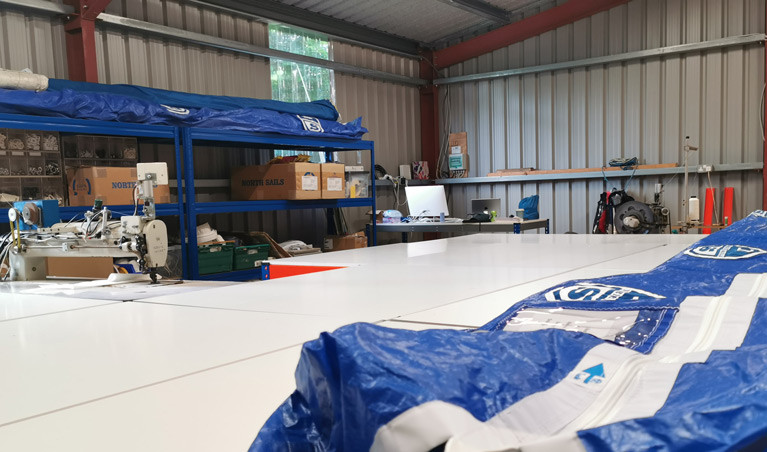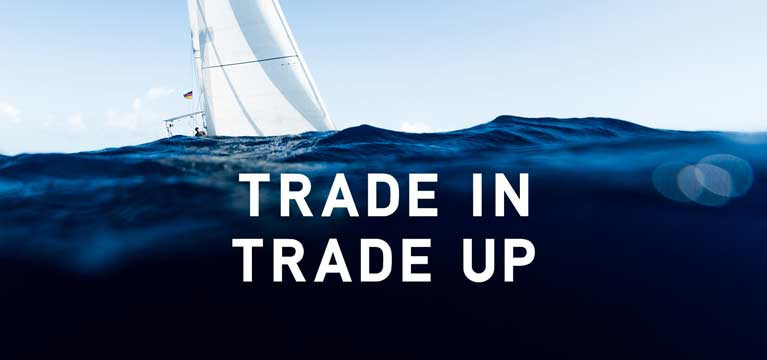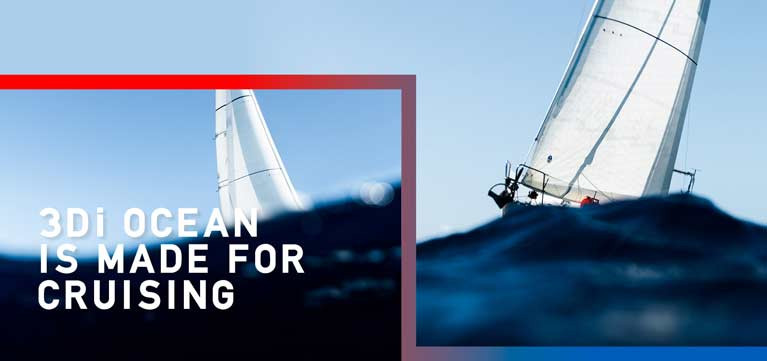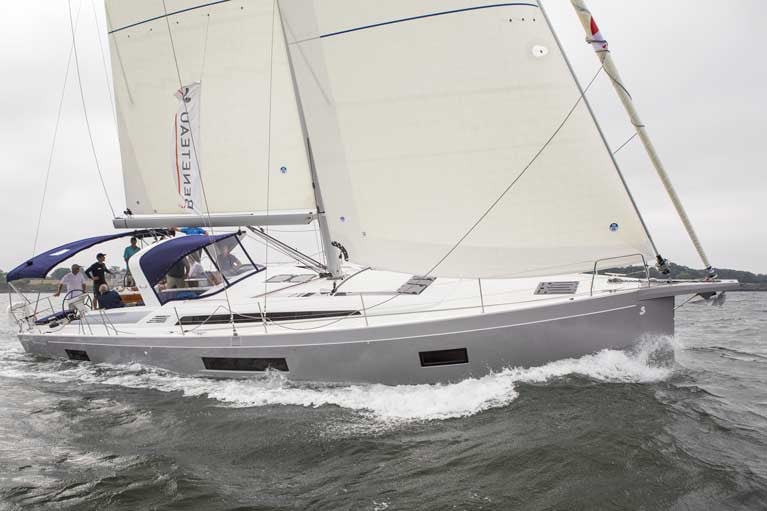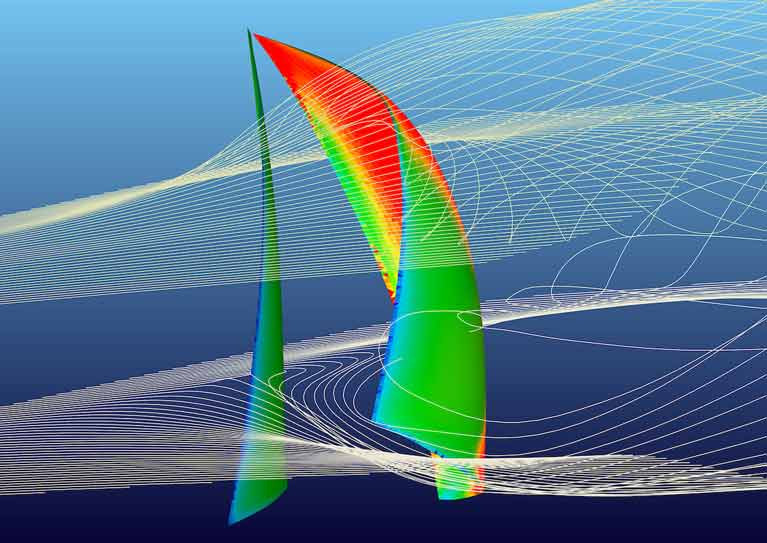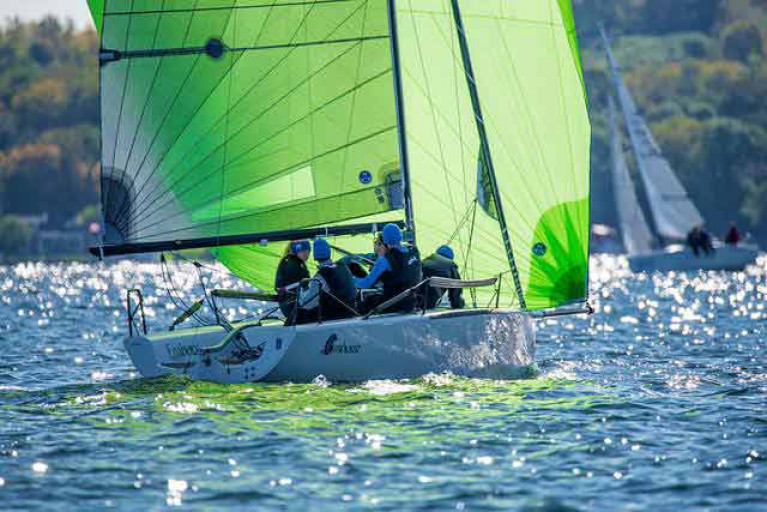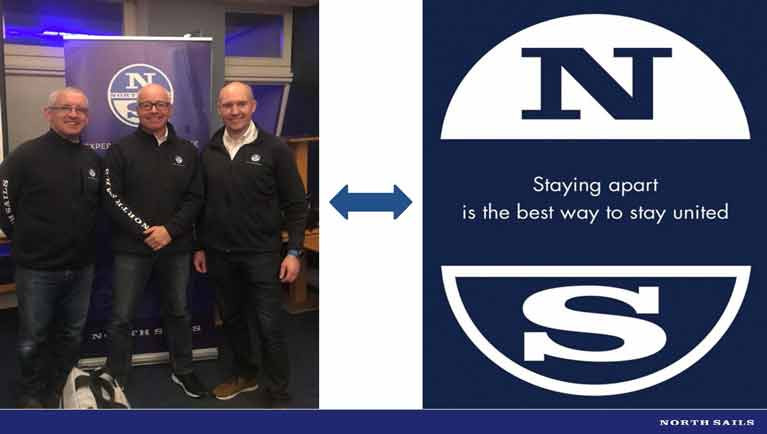Displaying items by tag: North Sails Ireland
North Sails Ireland 1720 News from the Baltimore Cup
Congratulations to all the North Sails Ireland customers for their great results in the recently held 1720 Baltimore Cup in West Cork.
First overall was Robert O'Leary flying North 3Di Mainsail and Large Jib.
Second overall was Anthony O'Leary flying the same combination of North 3Di sails.
 Second overall was Anthony O'Leary Photo: Deirdre Horgan
Second overall was Anthony O'Leary Photo: Deirdre Horgan
The Durcan Family sailing Team T-Bone was 4th overall Flying 2017 3DL upwind sails and excelling downwind with the latest T-6 spinnaker design.
 1720 T-Bone Photo: Deirdre Horgan
1720 T-Bone Photo: Deirdre Horgan
T-Bone was the only boat to win two races........Great to see this class enjoying such close racing in the beautiful waters of Baltimore.
Back in April 2019, I wrote a piece called "The Trickledown effect" this piece talks about how 3Di started life in the America's Cup and is now on the smallest One Design boats including the 1720. Well worth a read......
Also whilst we are on the subject of 3Di take a look here to understand exactly how it's made. Totally unique in the sailmaking world, when you watch this video it will go some way to explaining why a 3Di sail might cost a little more than a conventional 2D sail.
We look forward to the next 1720 regatta at the end of August as part of the Cork 300 celebrations.
Sail FAST!
North Sails Ireland's Update on the RL Sailing Figaro 3 Campaign
Learning to sail fast offshore in a foil assisted one-design race machine is not an easy task but that's the challenge Dubliner's Kenneth Rumball and Pamela Lee have lined up as they embark on their doublehanded Figaro3 campaign. Here, sailmaker, Nigel Young of North Sails Ireland reports on feedback received from France on the fledgeling Irish campaign.
We got a lovely note from Kenny and Pam about the new sails for the RL Racing Team last week. Read it here.
It's always nice to get feedback like this from our clients as they compete at all levels and all over the World.
3Di is unique in the World of sailmaking and the Figaro 3 class is another example of the benefits of 3Di in action.
Good Luck to Kenny and Pam as they compete in one of the toughest Offshore One Design classes in the World. Here at North Sails Ireland, we are delighted to be playing a small part in this campaign.
Keep up the good work and sail FAST.
North Sails Ireland is reporting that the new service location in County Wicklow is off to a flying start writes Nigel Young.
In the first 21 days, Shane Hughes and his team have serviced over 75 sails and they do not look like they are slowing down anytime soon.
I had the pleasure of visiting Shane last week at the Wicklow location and it was great to see the operation first hand. For a loft that's only been in operation for 20 days, it looks well established and the guys look very efficient in their surroundings. That's what happens when the operation is run by someone with Shane's skill set. Shane is a fully trained sailmaker with years of experience, a top-class International sailor and very in tune with modern sails and service.
 Sail repairs underway at North Sails Ireland's new east coast service loft
Sail repairs underway at North Sails Ireland's new east coast service loft
Only North Sails can service 3Di sails correctly...
One of the most important things to remember with sail service these days is that things have changed. With the advent of 3Di sails the service skill set required to work on those sails is very different to a more conventional sail material. Having said that, one of the great things about 3Di is that it does not go into the service loft very often!
With 3Di repairs, we use specialist adhesives and 3Di repair materials that are unique to North Sails. No other sail repair shop can work on the body of a 3Di sail without compromising the structure and integrity of the sail.
 3Di repairs use specialist adhesives and 3Di repair materials that are unique to North Sails
3Di repairs use specialist adhesives and 3Di repair materials that are unique to North Sails
3Di is a one-piece composite filament structure engineered very precisely and you cannot just bolt on a new reef for offshore sailing or take a heavy-duty sewing machine and start sewing in the middle of the sail.........3Di construction is unique in the sailmaking industry and it requires a specialist to service and repair it to the North Blue Book standards.
You would not take your new Tesla Car into the corner shop garage so please do not do the same with your 3Di sails......Always make sure they come back to Shane and his Team in Wicklow or one of the other specialist North Sails Service lofts that can be found all over the Globe.
If you have any sail service needs please do not hesitate to contact us here at North Sails Ireland.
North Sails Ireland Opens Wicklow Service Loft
North Sails Ireland has announced the opening of our new Service loft in Wicklow, close to the main Dublin sailing centres at Howth and Dun Laoghaire.
Shane Hughes is the man behind the new operation and he is more than qualified for the job. Shane has been a big part of North Sails since 1999 when he first joined the company and is a fully trained time-served sailmaker.
 Shane Hughes
Shane Hughes
Having previously managed the service floor for North Sails UK in Gosport, Hughes is no stranger to the world of sail service. He was born in Dublin and began his racing career at the age of nine at Howth Yacht Club. He went on to compete nationally and internationally in Mirrors and 420s and began racing keelboats at the age of 15. As a very experienced sailor, racer, and fully-trained sailmaker, you can rest assured your sails are in very safe hands at North Sails Wicklow.
For the full story please check out the link on the North Sails Site here
The loft is up and running at the Boatyard, Newcastle in County Wicklow and ready to take care of all your service needs.
 North Sails Ireland new repair loft is open in County Wicklow
North Sails Ireland new repair loft is open in County Wicklow
Please do not hesitate to contact us here at NS Ireland.
Sail FAST
Nigel
North Sails Ireland Launches 'Trade In Trade Up'
Our 2020 "Trade In Trade Up" recycle programme is here at North Sails Ireland!
This is a great opportunity for sailors and boat owners to recycle that older sail that's done its time. Many of you have sheds and garages full of them!
When you order your replacement sail from us, simply let us have the old one and we will give you up to 20% off the new sail. Simple as that.
Click here for more information on this and please do get in touch with us. It would be TREMENDOUS to hear from you.
From the team here at North Sails Ireland - see you on the water!
Last week I mentioned a new product launch was coming for 3Di Cruising Sails and please find the link below for the complete range of Ocean 3Di sails here
Before 3Di it was almost impossible to build a low stretch, high performance Cruising sail without a plastic film. As you know any sail with a plastic film is exposed to the possibility of delamination.
Laminate string sails are the worst product type for exhibiting this trait even though at first glance they may look like the answer. 3Di has many unique benefits and if you follow the link here you can read all about those.
The biggest difference is that with no plastic film in 3Di and a thermoset glue (chemical reaction) means No Delamination Guaranteed......... We have been selling 3Di in all its forms here in Ireland for the last 10 years and we have not had one sail delaminate, with 3Di it's not possible.
For more information please do not hesitate to contact us at North Sails Ireland on the contact details below
Things to Look for in A Good Sail When Cruising
North Sails may be known best for their racing products but what many people do not know is that close to fifty percent of our total global business is actually in cruising sails.
With the genuine trickle down effect from the AC North's unique 3Di product can now be found on more and more cruising boats throughout the world. The same benefits of 3Di that make it a world beater on the race track also make it very suitable as a cruising sail. 3Di durability is well known and the latest range of Ocean 3Di is about to be expanded to cover all sizes of cruising boats. More news to follow on that next week...
 3Di Ocean under construction
3Di Ocean under construction
Just because you are cruising and not racing you should still expect the very best from your sails. Here at North Sails we have products to suit all boat types and budgets.
 North Sails 3Di Ocean Close up under sail
North Sails 3Di Ocean Close up under sail
Take a look at the link here for a bit more information on what North sails can do for you today!
Please do not hesitate to contact us here at North Sails Ireland with any questions you may have.
North Sails Ireland will be running our local Irish Webinar series on Wednesday the 13th May. This time we are talking about the North Sails design process "From Concept to Reality" and explaining how we go through the various stages of design from start to finish.
North Sails Design expert Jeremy Elliott originally from Kinsale and now residing and working in the UK will be our guest speaker. He's in charge of Design Services for North Sails and has been involved in many Irish projects and sailing teams over the years.
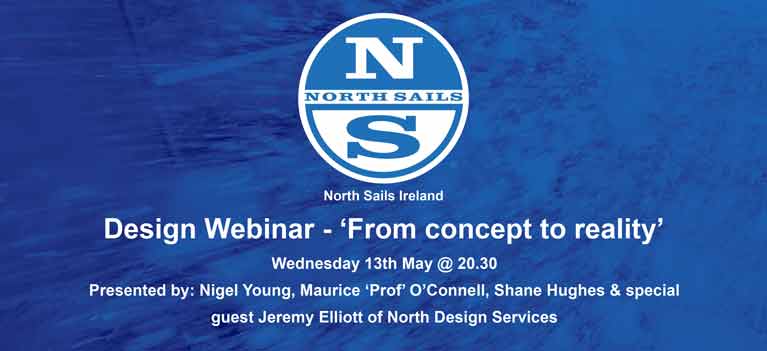
Here at North Sails Ireland we have all had the pleasure of working and sailing with Jeremy over the years and we are delighted to have him join us for the presentation on Wednesday evening.
Please sign up in advance using the registration link HERE. The Webinar is open to all Irish Sailors and we look forward to seeing you on Wednesday evening the 13th of May at 8.30 pm.
Prof O'Connell of North Sails Ireland to Host Melges 24 'Downwind Speed' Webinar with World Champion Federico Michetti
I am honoured to host a North Sails Ireland 'downwind speed' webinar on Monday, May 11th at 8 pm (9 pm CET) with Five-time Melges 24 World Champion Federico Michetti.
We will be discussing:-
- Displacement (non-planing) sailing
- Transitioning to "Bow Up" planing
- Gybing techniques and when to use them
- Sail selection for the different conditions
Joining us from Genoa will be my friend and colleague Giulio Desiderato from Norths Sails Italy.
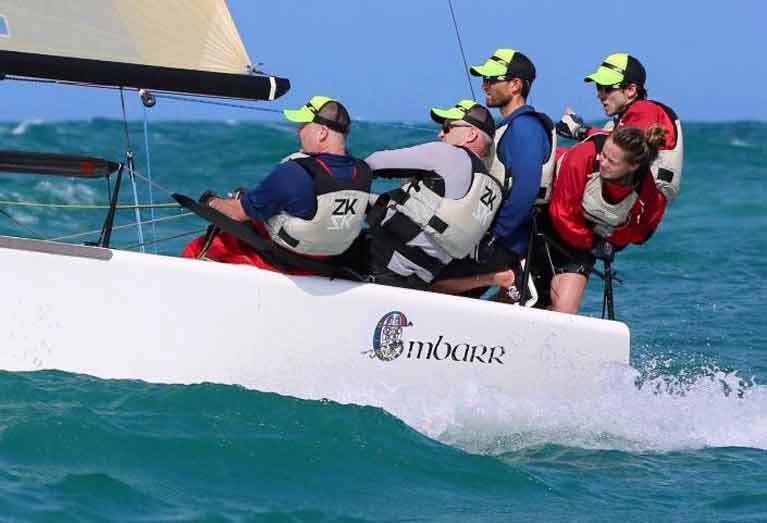 Ireland's Embarr" with Prof O'Connell on spi-trim training in waves off Miami Beach
Ireland's Embarr" with Prof O'Connell on spi-trim training in waves off Miami Beach
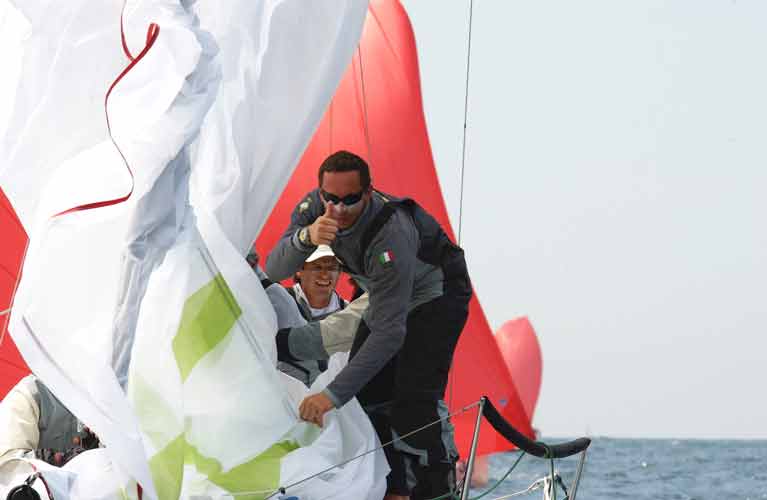 Frederico Michetti
Frederico Michetti
So if you are interested in what makes modern asymmetric keelboats go FAST, then be sure to join us by registering here
In these uncertain times, North Sails are pulling out all the stops to stay connected with our customers and friends here.
The International Webinar Series is proving incredibly popular and if you missed them on the day you can view at your leisure via the North Sails YouTube page.
Here in Ireland, we have just started our local Irish Webinar series and have run three of these to date and our fourth Webinar will run next week.
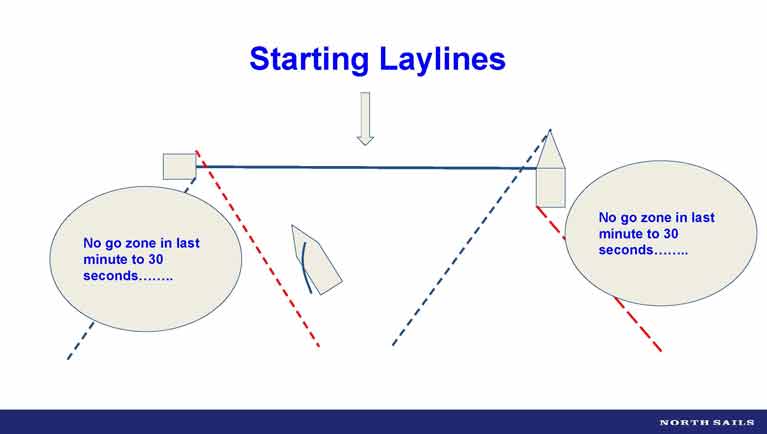 A slide from a North Sails Ireland webinar
A slide from a North Sails Ireland webinar
More news and details to follow on that one as it unfolds.
We have enjoyed some great interaction with the sailors of Ireland on Zoom recently, this platform looks like it's going to be playing a larger part in our future for a while to come.
Kind regards from us all here at North Sails Ireland,
Nigel, Prof and Shane.


























